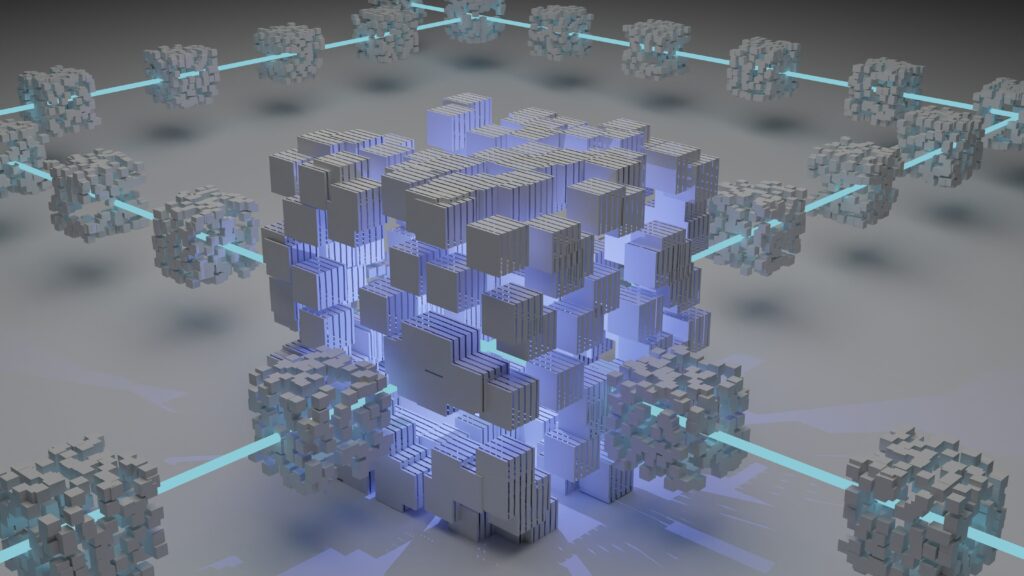In its first half, the project has identified the diverse use cases requirements which it is meant to satisfy, and has defined the technical design of the platform and its core components though which the envisaged functionality will be delivered. This has been conducted through continuous collaboration of both potential user groups and technical partners, ensuring that the project developments will constantly follow the market dynamics and user needs.
The IoT-NGIN meta-architecture has been a flagship outcome, hosting the efforts around facilitating the development of modular smart solutions for the next-generation IoT.
Initial technological developments have been released around 5G enhancements, innovative MLOps offerings, ambient intelligence support, as well as advanced cybersecurity solutions for the next-generation IoT.
Moreover, comprehensive preparation activities in the pilot sites have yielded the IoT solution design for 10 UCs in 5 Living Labs, as well as initial trial results, which verify that the IoT-NGIN design and developments address topical needs of next-generation systems.
Last, but not least, IoT-NGIN research and innovation have attracted high interest of the core of the EU market, with α large number of SMEs wishing to adopt and extend the project outcomes through the 1st Open Call.
The project has now entered its second period of enhancing the project specifications, through feedback from continuous technology watch, analyzing additional use cases and ensuring keeping up with the latest technological trends in 5G, AI, IoT, big data and different industry verticals.
Also, the 2nd Open Call has been organized and we have accepted submissions until the end of September 2022. Evaluation process is now in progress to derive the exact list of winners by the end of November 2022.
Furthermore, the technological developments have matured and updated releases have been out.
A challenging set of enhancements to 5G technologies has been released, addressing the need for rapidly increasing communication networking support. These include relay selection strategies for coverage extension through D2D communications, updates on TSN solution for device synchronization through 5G and connection with 5GLAN based on current 5G standards, a simple 5G resource management API, exposing 5G services to IoT applications, as well as a flexible and secure edge-cloud framework, which improves the security of Edge Clouds and reduces the overheads associated with virtualisation of micro-services. More information about these developments can be found in D2.2.
Moreover, our work has progressed on the development of the IoT-NGIN MLaaS platform, leveraging the state-of-the-art open sources tools, and supporting the complete ML lifecycle from data collection to model serving. enhanced ML techniques, namely the Online Learning framework, as well as the Reinforcement Learning framework, have matured and an initial implementation of the Online Learning framework has been released. Also, the initial developments of the IoT-NGIN Privacy-Preserving Federated Learning framework, based on three state-of-the-art FL frameworks (NVIDIA FLARE, Flower integrated with PATE by IoT-NGIN and TFF) has been released. This work can be followed in D3.3 (which will be published online soon).
The intermediate version of the four components developed to enable ambient intelligence functionality in IoT-NGIN use cases has been also delivered. These include IoT Device Discovery (IDD), responsible for recognition and/or positioning of IoT Devices via Computer-Vision based image recognition, Visual Light Positioning, code scanning and Ultra-Wide Band localization; IoT Device Indexing (IDI), which manages device-related information and supports Digital Twin functionality; IoT Device Access Control (IDAC), which intervenes communications among IoT-NGIN components and provides configurable multi-criteria access control; and IoT AR/MR Service, which delivers AR/MR interactions across several use cases, towards diverse sensors and diverse AR interfaces. This work can be followed in D4.3 (which will be published online soon).
The IoT-NGIN approach to Federated Learning (FL) cybersecurity has been also advanced, based on updated GAN-based dataset generator, which emulates the generation of poisoning attacks in FL system and FL poisoning datasets. Also, the Malicious Attack Detector (MAD) has been extended to support both network-level and FL poisoning attacks. The Vulnerability Crawler, that monitors IoT nodes and detects vulnerabilities, has been finalized and the Moving Target Defense (MTD) Honeypot Framework, that is driven by MTD principles and deploys honeypots dynamically, has been further developed. This work can be followed in D5.2 (which will be published online soon).
The problems of cybersecurity, privacy preservation and trust improvement in the domain of IoT systems have been further addressed by the first versions of technological solutions in the field of multi-ledger operations, semantic interoperability practices for Digital Twins, and Self-Sovereign Identities. Decentralised Interledger Bridge (DIB) has been selected as a solution to fulfil IoT-NGIN requirements for interledger. Semantic Twins are developed in the IoT-NGIN project as a general solution for adding metadata to Digital Twins. Moreover, two Self-Sovereign Identity technologies have been explored, namely Verifiable Credential based decentralised on-device access control with constrained IoT Devices and QR code and GS1 Digital Link based discovery mechanisms. This work can be followed in D5.4 (which will be published online soon).
Notably, the project developments so far are available as open source for interested stakeholders at the IoT-NGIN public group on GitLab.
Stay up to date with our project news for the future technological releases!

